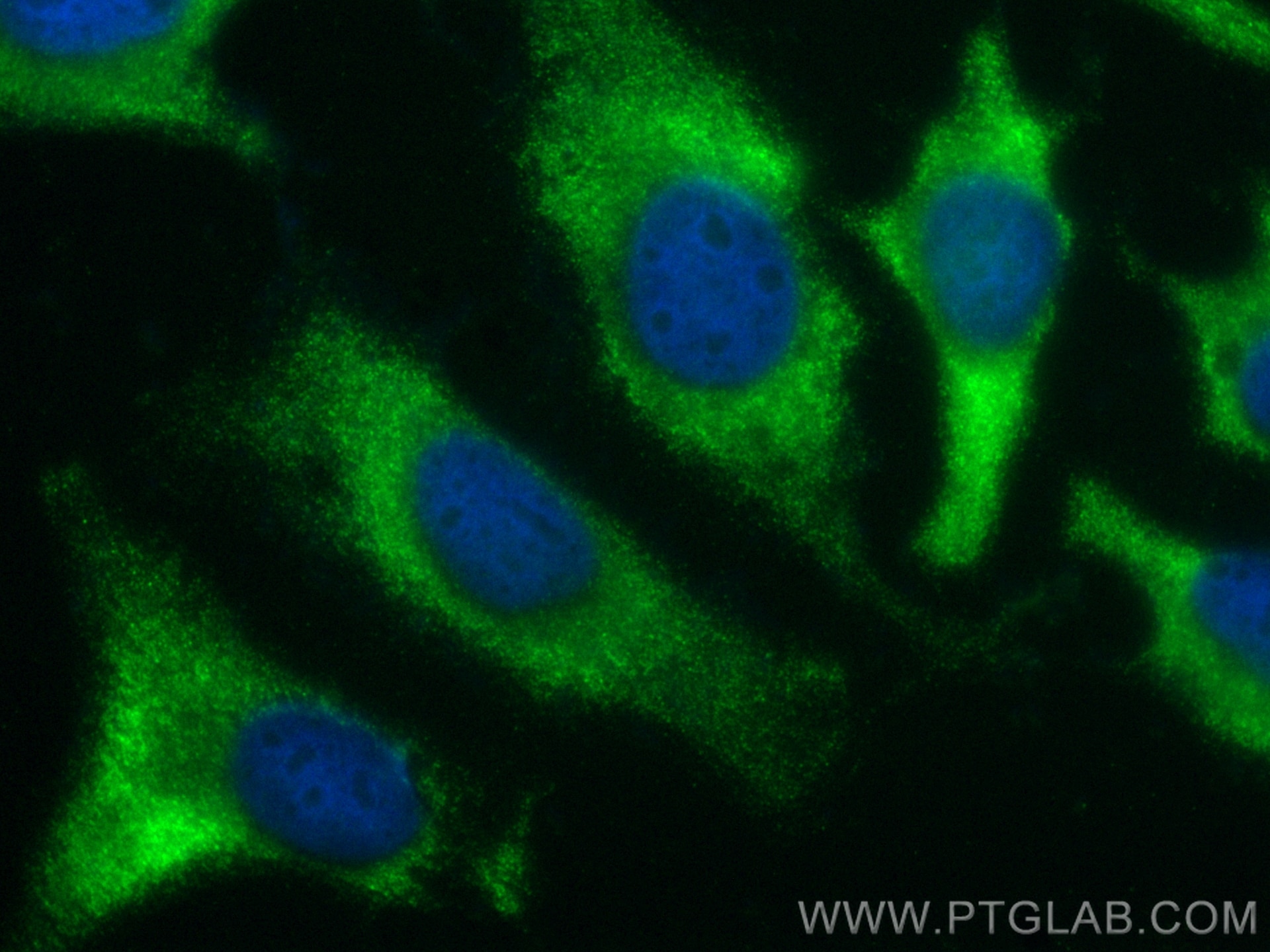Validation Data Gallery
Filter:
Tested Applications
| Positive IF/ICC detected in | HeLa cells |
Recommended dilution
| Application | Dilution |
|---|---|
| Immunofluorescence (IF)/ICC | IF/ICC : 1:50-1:500 |
| It is recommended that this reagent should be titrated in each testing system to obtain optimal results. | |
| Sample-dependent, Check data in validation data gallery. | |
Product Information
CL488-11155 targets EIF5 in IF/ICC applications and shows reactivity with human, mouse, rat samples.
| Tested Reactivity | human, mouse, rat |
| Host / Isotype | Rabbit / IgG |
| Class | Polyclonal |
| Type | Antibody |
| Immunogen | EIF5 fusion protein Ag1629 相同性解析による交差性が予測される生物種 |
| Full Name | eukaryotic translation initiation factor 5 |
| Calculated molecular weight | 49 kDa |
| Observed molecular weight | 50 kDa |
| GenBank accession number | BC032866 |
| Gene Symbol | EIF5 |
| Gene ID (NCBI) | 1983 |
| RRID | AB_3672484 |
| Conjugate | CoraLite® Plus 488 Fluorescent Dye |
| Excitation/Emission maxima wavelengths | 493 nm / 522 nm |
| Form | Liquid |
| Purification Method | Antigen affinity purification |
| UNIPROT ID | P55010 |
| Storage Buffer | PBS with 50% glycerol, 0.05% Proclin300, 0.5% BSA , pH 7.3 |
| Storage Conditions | Store at -20°C. Avoid exposure to light. Stable for one year after shipment. Aliquoting is unnecessary for -20oC storage. |
Background Information
Eukaryotic translation initiation factor 5, also named as EIF5, is a 431 amino acid protein, which contains one W2 domain and belongs to the eIF-2-beta/eIF-5 family. EIF5 catalyzes the hydrolysis of GTP bound to the 40S ribosomal initiation complex with the subsequent joining of a 60S ribosomal subunit resulting in the release of eIF-2 and the guanine nucleotide. EIF5 plays multiple roles in translation initiation.
Protocols
| Product Specific Protocols | |
|---|---|
| IF protocol for CL Plus 488 EIF5 antibody CL488-11155 | Download protocol |
| Standard Protocols | |
|---|---|
| Click here to view our Standard Protocols |
